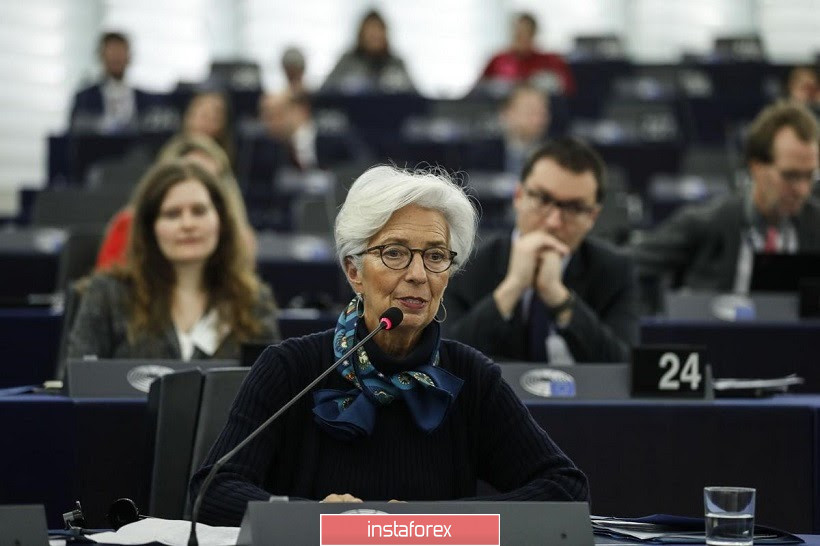The euro-dollar pair continues to sink: the price has reached multi-month lows - the last time it was at such lows was in April 2017. Bears overcame the support level of 1.0850, after which the next price reference was the 1.0810 mark - the lower line of the Bollinger Bands indicator on the monthly chart. The US currency confidently demolished all other barriers, opening the way to the seventh figure. Today's release may push EUR/USD sellers to storm the last support level before the 7th figure. We are talking about the publication of data on German GDP growth. If the German economy disappoints, the single currency will weaken again, strengthening the pair's downward movement. However, the lower the euro falls, the higher the risk of catching the low. Now EUR/USD is at 33-month lows, and this fact should alert the supporters of short positions.

In general, the euro-dollar pair is falling due to the strengthening US currency, while the euro is moving in the wake of the quoted currency. The greenback received support from relatively good data on inflation growth yesterday, amid growing panic about the spread of coronavirus. The dollar index confidently took a 99-point mark, thus rising to three-year highs. Unlike the pound, the single currency could not restrain the onslaught of dollar bulls, after which the bears of the EUR/USD pair discovered new price horizons.
US inflation came out at the forecast level. The basic consumer price index rose to 2.3% in annual terms and by 0.2% in monthly terms. The general index strengthened to 2.5% on an annualized basis (the highest since October 2018) and slightly slowed down on a monthly basis (to 0.1%). Such figures are quite satisfactory for market participants - and although inflation has not shown any radical breakthrough, the published figures allow the Federal Reserve to maintain a wait-and-see attitude.
By and large, Jerome Powell confirmed such intentions during his speeches in Congress. The coronavirus is still the dark horse in this context (the Fed chief hinted that the regulator may lower the rate if unforeseen circumstances intensify), but ironically, the coronavirus factor also supports the dollar's position, as traders use it as a defensive asset. In other words, in any situation, the US currency wins - especially when paired with the euro, which received the next batch of heavy lifts yesterday, pulling it down.
First of all, German inflation disappointed. And although only the final CPI estimate for January was published yesterday, the figures released reminded traders of a slowdown in European inflation. Let me remind you that the consumer price index in Germany on a monthly basis fell back into the negative area, showing deflationary processes. In addition, this week it became known that industrial production in the eurozone countries fell to -2.1% on a monthly basis and to -4.1% on an annualized basis. Both indicators came out in the red zone, not significantly reaching the forecast values. Such dynamics put additional pressure on the euro, which is still weak following the slowdown in inflation growth and soft comments of ECB members.
This week, Christine Lagarde was unable to support the European currency, even with her thesis that soft monetary policy negatively affects savings income, increasing the value of assets. Speaking within the walls of the European Parliament, she once again called on governments of the eurozone countries to take measures to stimulate economic growth. However, this rhetoric has been ignored by the market. Firstly, these theses have already been heard - Lagarde has not voiced anything new. Secondly, traders are skeptical that in the foreseeable future the ECB will tighten the terms of monetary policy, against the backdrop of the difficult situation in the European economy.

In other words, the downward dynamics of the EUR/USD pair is fully justified from the point of view of the fundamental background. But here a logical question arises: at what price level will the pair form a low? The price has been falling almost without a break for more than ten trading days, that is, within two weeks. Sooner or later, the "boiling point" will be reached, and the pair will attract buyers, at least because it's oversold.
In my opinion, sellers should be careful at the bottom of the 8th figure. The lower line of the Bollinger Bands indicator on the monthly chart is passing at around 1.0810. This is a fairly strong level of support, which can a) contain the onslaught of bears; b) - to attract buyers. It is also worth recalling that US data are on focus today: retail sales data will be published. The overall figure rose by 0.3% in December and January figures should also show positive dynamics - both the total retail trade, and excluding car sales. All these indicators should go above zero (0.4% and 0.6%, respectively).





















